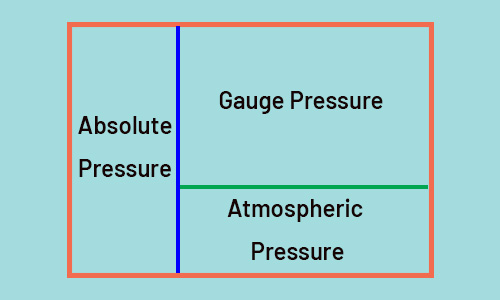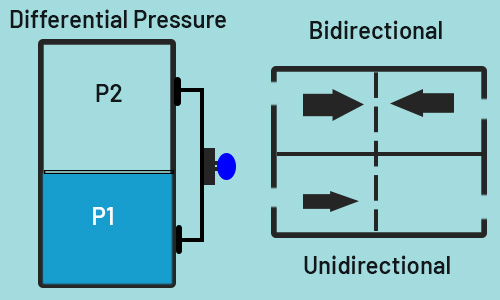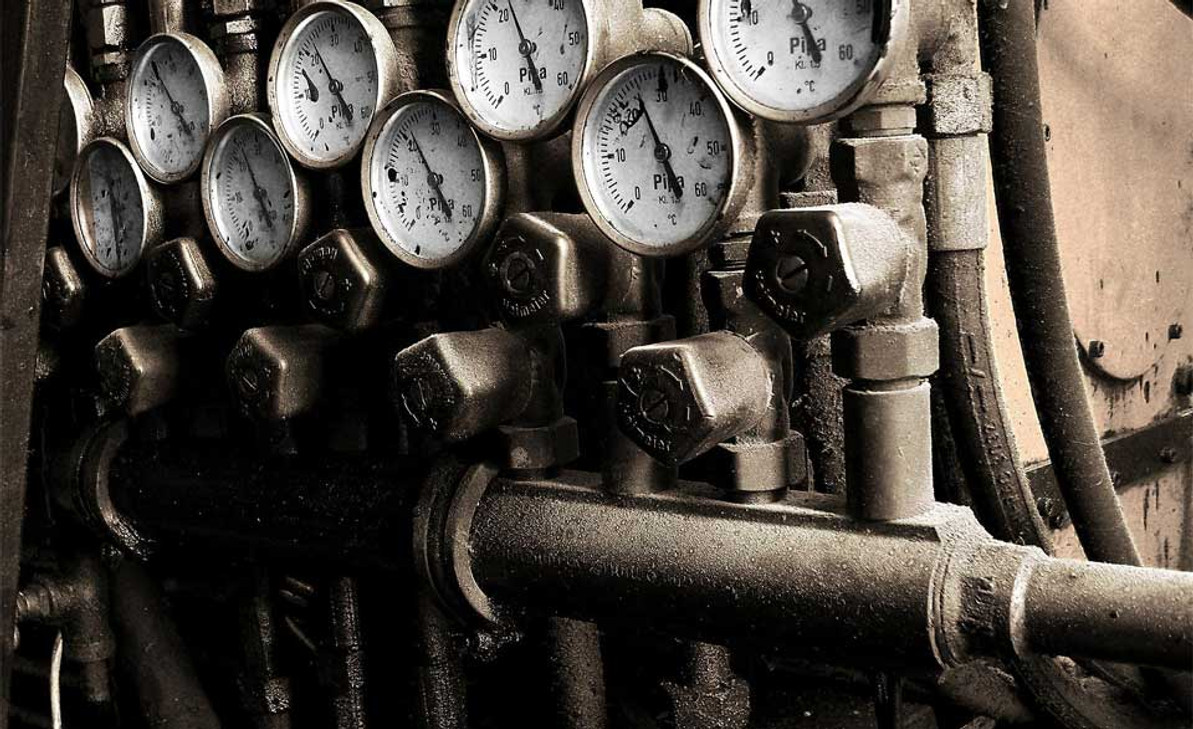Types of Pressure (Absolute Pressure, Gauge Pressure, Differential Pressure)
Pressure measurement is only done when compared to another known pressure. This pressure is defined as the reference pressure for measuring pressure in a standard way. This device provides a pressure reference to compare the pressure of a device under test during a calibration.
Also, it can be defined as the pressure present on the reverse or negative side of a pressure sensing device. Depending on what the reference pressure is, there are three modes: absolute, gauge, and differential.
Find the best Pressure Transmitter Product for your specific needs in our store.
Absolute Pressure
In this pressure measurement method, the number absolute zero is selected as the measurement reference, therefore its value is always a positive number.
In this type of pressure sensor, the second side of the diaphragm of the absolute pressure sensor is placed in a vacuum.
Therefore, its deformation is related to exactly the amount of pressure measured. In an absolute pressure sensor, the pressure is measured relative to the High Vacuum sealed behind the diaphragm, which is considered as the reference pressure.
This method will be useful for applications where atmospheric pressure is measured (for example, to determine altitude).
Sensor: An absolute pressure sensor is used to measure the pressure that is not influenced by changes in temperature and is used in cases where the difference between the ambient pressure and the applied pressure is small.
Units: At absolute pressure, a Paa (pascal’s absolute) or psia (pounds per square inch absolute), Bar and … are some pressure units used to indicate absolute pressure.
Applications: The application measuring absolute pressure includes:
- The determination of the vapor pressure for liquids
- The monitoring of condensation pressures
- Vacuum pumps
- Equipment for the food industry
- Atmospheric pressure, barometers, and altimeters

Barometric Pressure Sensor
Barometric Pressure Sensor is a new type of barometer that detects changes in the pressure exerted by the atmosphere in environments.
They generally measure absolute pressure, meaning that the reference for this measurement is the absolute vacuum.
So these are absolute pressure sensors designed and calibrated for measuring the barometric air pressure in the range between 800 and 1200 mbar for use in industrial and research applications.
This pressure sensor works based on the piezoresistive principle or the capacitive principle. They are commonly used for applications including:
- Weather stations
- Data buoys
- Indoor navigation
- Elevator/floor change detection
- Aircraft altimeter recertification
- Wind assessment
- High-altitude research balloons
Gauge Pressure
The gauge pressure is measured relative to the atmospheric pressure. In other words, atmospheric pressure is considered as the reference pressure.
Measured pressure can be positive for pressures above atmospheric pressure and negative for pressures below atmospheric pressure and its average at sea level is 1013.25 mbar. Deflection in the atmospheric pressure due to altitude weather conditions directly influences the gauge pressure.
Sensor: A gauge pressure sensor measures and monitors the pressure at its port relative to the local atmospheric pressure and it is used when the process is influenced by a change in atmospheric pressure.
In pressure gauge sensors, the second side of the diaphragm is placed at atmospheric pressure. As a result, the pressure being measured is the difference between the atmospheric pressure and the applied pressure.
Unit: Some pressure units of gauge pressure are Pounds per square inch gauge (PSIG), Pounds per square inch compound (PSIC), Pounds per square inch vacuum (PSIV), Pounds per square inch absolute (PSIA), Bar and ….
Applications: The gauge pressure sensor is the most common pressure sensor found in almost every application and industry including:
- Air compressors
- Automated pneumatic assembly equipment
- Vacuum
- Factory automation
- Industrial controls
- Open tanks
- Industrial gas supply
- Liquid level metering
- Autoclave
- Oil pressure sensing
- Hydraulic pressure
- Oxygen concentrators
- Pressure valves
- Dental
- Process control pumps
- Medical instrumentation
Gauges pressure sensors are divided into the following two categories in terms of their design and reference pressure:
Tap here to get more information about one of leaders in pressure sensor field that called Hogller.
Vented Gauge
In Vented Gauge (VG) pressure sensors, the pressure is measured relative to the barometric reference pressure.
In the structure of these sensors, a small venting hole behind the diaphragm is provided to exchange atmospheric pressure. Therefore, the air pressure behind the diaphragm is always exactly equal to the ambient atmospheric pressure.
The most important advantage of these pressure sensors is that the changes in atmospheric pressure have no effect on the sensor reading at zero.
In other words, the zero-point reading is automatically compensated, and when no pressure is applied to the sensor, the sensor reads the "zero" pressure exactly.
This feature is especially useful in low-pressure ranges where output is significantly affected by changes in atmospheric temperature.
Sealed Gauge
In sealed gauge pressure sensors, the pressure is measured relative to the reference atmospheric pressure enclosed behind the diaphragm.
In other words, in the structure of these sensors, no holes are used for air exchange and behind the sensor diaphragm, the atmospheric sea pressure is enclosed at the surface (about 1 bar or about 14.7 psi).
Therefore, due to the fact that atmospheric pressure is constantly changing with changes in climate and temperature, the sensor can never read exactly "zero" pressure in normal mode (without applying inlet pressure).
These sensors are suitable for use in applications where venting can not be designed, such as hydrostatic pressure sensors that need to measure pressure at the desired depth relative to atmospheric pressure.
They are also suitable for use in high-pressure applications where the temperature is constant. For example, in hydraulic applications where temperature changes have very little effect on the accuracy and precision of the pressure transmitter (accuracy).
Since the effects of air expansion and contraction against the high-pressure range are negligible, the use of venting is not necessary.
Differential Pressure
Differential pressure sensors are another type of pressure sensor that has two process connections and can measure the difference between the two process pressures. You can see our selection of pressure sensor by clicking here.
The differential pressure is similar to the gauge pressure, except that the reference point is a different pressure point than the atmospheric pressure.
These sensors are commonly used to monitor airflow in heating, ventilating, and air conditioning (HVAC) equipment.
This type of pressure is also used to determine the fill level in a closed tank. These sensors are divided into 2 categories:
- Unidirectional pressure sensor
- Bidirectional pressure sensor

Unidirectional Pressure Sensor
Unidirectional pressure sensors are only capable of operating (pressure measurement) in the range of more than zero (positive) (P1> P2).
The sensor aperture can only move in one direction and thus produce only one positive voltage or current (milli ampere) output signal.
These sensors are used in many HVAC applications, such as static duct pressure monitoring. Another example would be measuring the differential pressure at both ends of a filter to determine if the filter should be replaced.
In this case, the "High Pressure" port is connected to the filter inlet and the lower port is connected to the drain.
Bidirectional Pressure Sensor
Bidirectional pressure sensors are able to measure the difference between positive and negative pressures. In other words, the diaphragm of this sensor can move in two different directions, which enables the sensor to measure the difference between positive (P1> P2) and negative (P1 <P2) pressures.
Bidirectional pressure sensors are often used in pressure room applications. Such as operating rooms and protected rooms in hospitals, isolated rooms, pharmacy rooms, vivarium, and other important environments that need to maintain pressure differences in one direction in order to maintain the health of patients and keep the environment free of any Infection.
In fact, this keeps the positive pressure areas free of contamination and prevents contaminants from penetrating the lower pressure areas into the higher pressure areas.
Therefore, during installation, the High-Pressure port is always connected to the controlled room and the Low-Pressure port is connected to an outside reference such as the corridor adjacent to the room.
Unit: Usual units to measure differential pressure are pressure per square inch differential (psid) or bar differential (bar/d)
Please refer to other pressure sensor articles for more information:
Melt Pressure Transmitter and High-Temperature Transmitter
Ingress Protection Vs. NEMA Enclosure Ratings
Wetted Parts in Pressure Sensors (Diaphragm Seal, Capillary and Seal or O-ring)
An Eye-Opening Guide To Pressure sensor Types: Everything You Need To Know
Introducing Any Pressure Sensor Use You Might Need
Recent Posts
-
Booster Pump Troubleshooting and Maintenance: How to Fix and Prevent Common Issues
1. Introduction Imagine turning on your faucet only to be greeted with a weak trickle of water when …22nd Apr 2025 -
Energy-Efficient Booster Pumps: Selection and Tips for Maximizing Performance
1. Introduction Imagine never having to deal with fluctuating water pressure, noisy pumps, or skyroc …19th Apr 2025 -
Booster Pumps for Sustainable Water Systems: Irrigation and Rainwater Harvesting Solutions
1. Introduction Water scarcity is no longer a distant threat—it’s a reality affecti …16th Apr 2025




